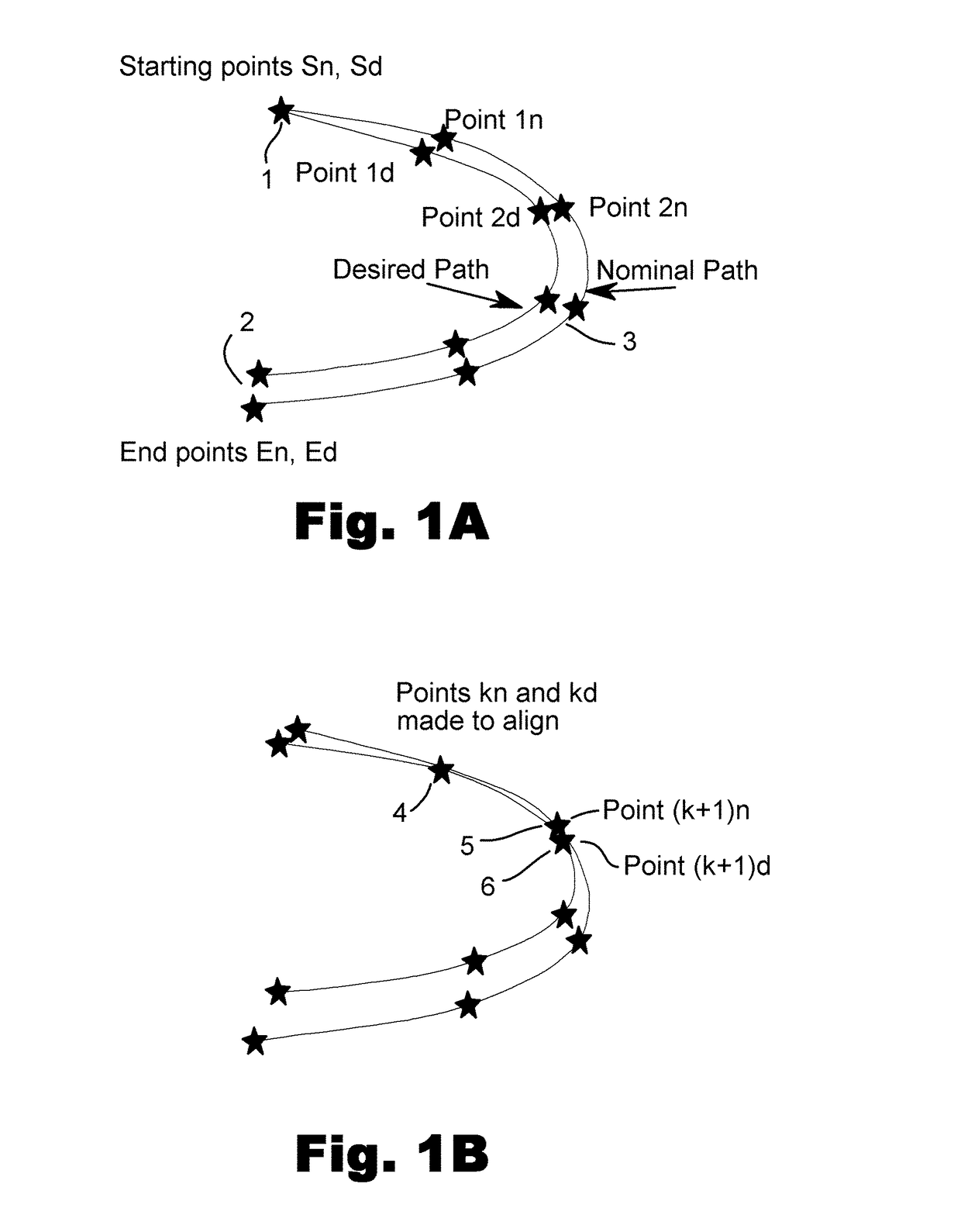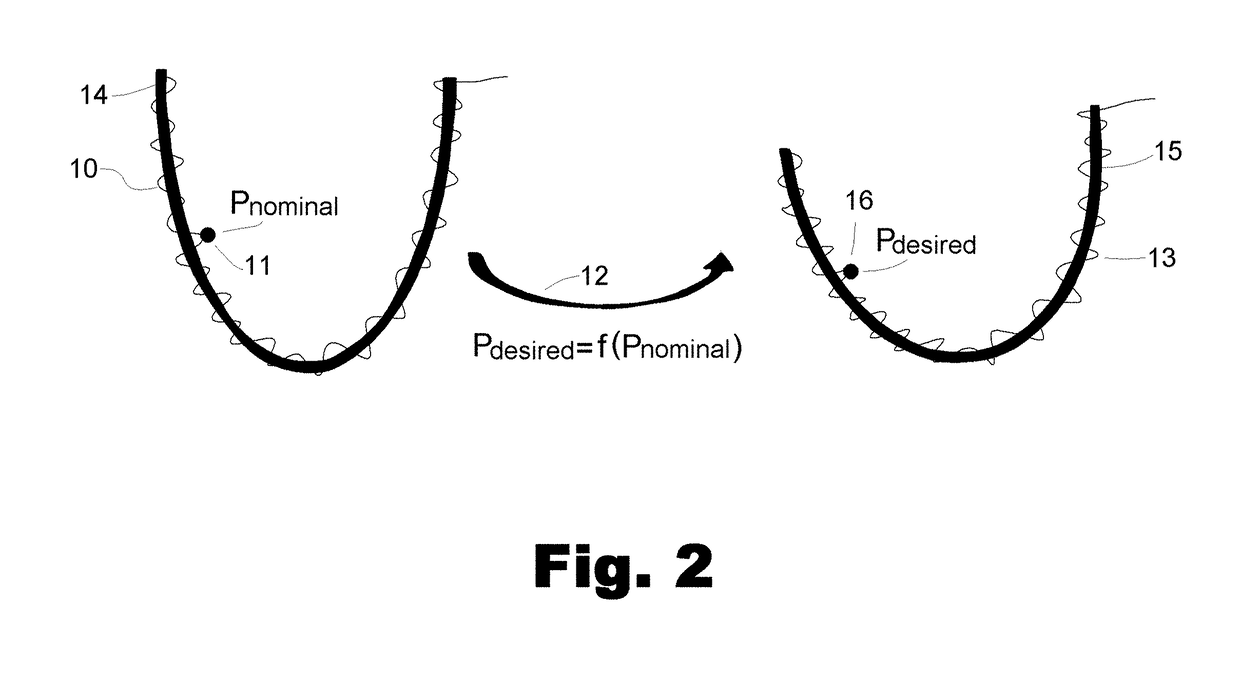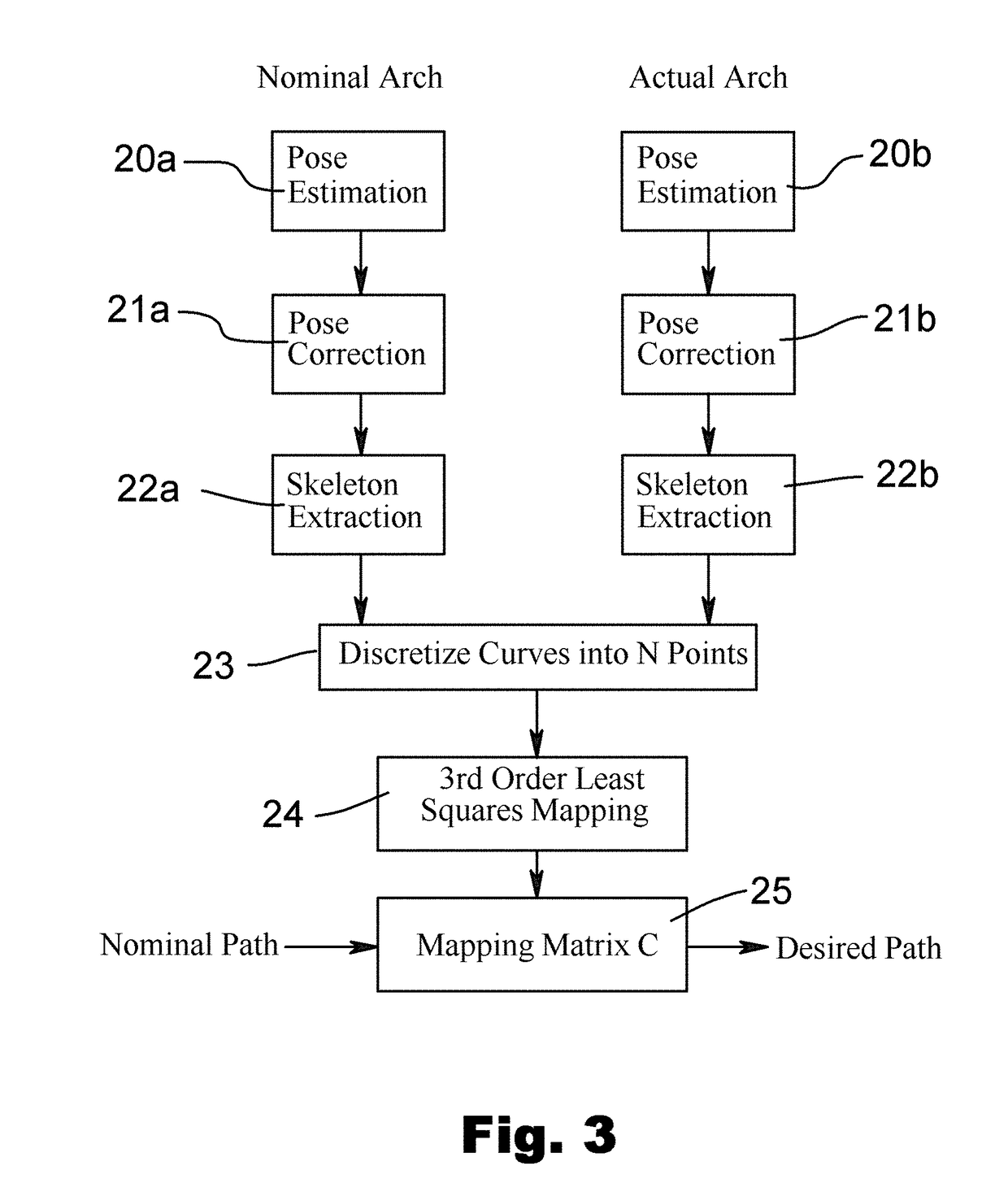Vision guided robot path programming
a robot path and vision technology, applied in the field of vision guided robot path programming, can solve the problems of degrading the economics of robot use, degrading the use efficiency of robots, time-consuming and costly, etc., and achieve the effect of removing human involvemen
- Summary
- Abstract
- Description
- Claims
- Application Information
AI Technical Summary
Benefits of technology
Problems solved by technology
Method used
Image
Examples
Embodiment Construction
[0029]Embodiments of the present invention provide a system and method for programming the robot path to be traced on a physical target by the use of sensors, especially vision sensors. They allow the robot to identify the target and generate the desired path once it has the opportunity to recognize a preselected starting point along the path. Using a vision camera mounted on, or close by, the robot, and a reference image of the target having a nominal path associated with the reference image and having a designated starting point, the robot interacts with the vision camera and compares the live image of the target to the reference image and selects a corresponding path starting point on the live image.
[0030]Once at the path starting point, the robot vision system superimposes the nominal path on the live image, matching their starting points and their geometric coordinate frames. The robot matches features associated with a first end point of a first segment of the nominal path wit...
PUM
 Login to View More
Login to View More Abstract
Description
Claims
Application Information
 Login to View More
Login to View More - R&D
- Intellectual Property
- Life Sciences
- Materials
- Tech Scout
- Unparalleled Data Quality
- Higher Quality Content
- 60% Fewer Hallucinations
Browse by: Latest US Patents, China's latest patents, Technical Efficacy Thesaurus, Application Domain, Technology Topic, Popular Technical Reports.
© 2025 PatSnap. All rights reserved.Legal|Privacy policy|Modern Slavery Act Transparency Statement|Sitemap|About US| Contact US: help@patsnap.com



